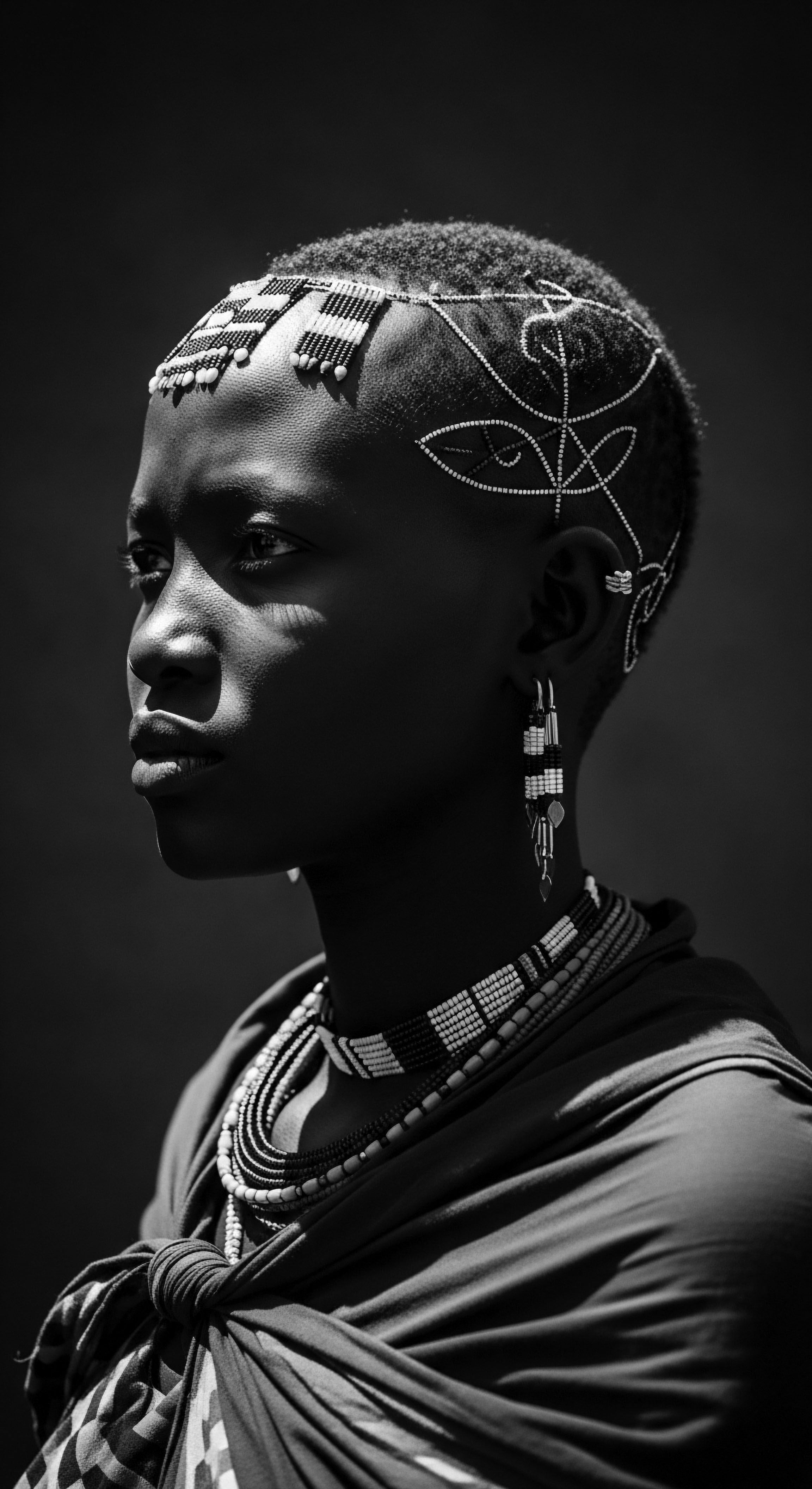
Fundamentals
The phrase “Coiled Hair Conditioning” refers to the specific, intentional practice of providing moisture, nourishment, and structural support to hair strands characterized by a spiral or helical shape. This care regimen is not merely about superficial gloss; it delves into the inherent biology of coiled hair, recognizing its unique needs stemming from its architectural form. Such conditioning aims to enhance the hair’s natural resilience, maintain its elasticity, and protect its delicate cuticle layers from environmental stressors and mechanical damage. For those with highly textured hair, this process is foundational to maintaining hair health and vibrancy.
Understanding the core meaning of Coiled Hair Conditioning begins with an appreciation for the hair strand itself. Each strand, a complex protein fiber, possesses a cuticle, cortex, and sometimes a medulla. In coiled hair, the cuticle, the outermost protective layer, tends to be more raised and exposed along the curves of the helix.
This structural particularity allows for a quicker loss of moisture, rendering coiled hair more prone to dryness than straighter textures. Consequently, conditioning for these hair types focuses heavily on deep hydration and sealing the cuticle to retain that precious moisture.
Beyond the biological imperatives, Coiled Hair Conditioning carries a profound cultural connotation, particularly within Black and mixed-race communities. For centuries, care for coiled hair has been interwoven with identity, communal rituals, and a heritage of self-preservation. The earliest forms of conditioning involved natural emollients and practices passed down through generations, long before the advent of modern cosmetic science. This foundational care is an echo from the source, a whisper of ancestral wisdom.
Coiled Hair Conditioning is a vital practice for textured hair, providing essential moisture and structural integrity while carrying deep historical and cultural significance.
The conditioning process encompasses various techniques and products, each designed to address the distinct requirements of coiled strands. These can range from pre-shampoo treatments that prepare the hair for cleansing, to rinse-out conditioners that detangle and smooth, and leave-in formulations that provide sustained hydration throughout the day. The selection of ingredients often prioritizes humectants, which draw moisture from the air, and occlusives, which create a barrier to prevent water loss. This careful layering of products supports the hair’s natural state, honoring its inherent beauty.
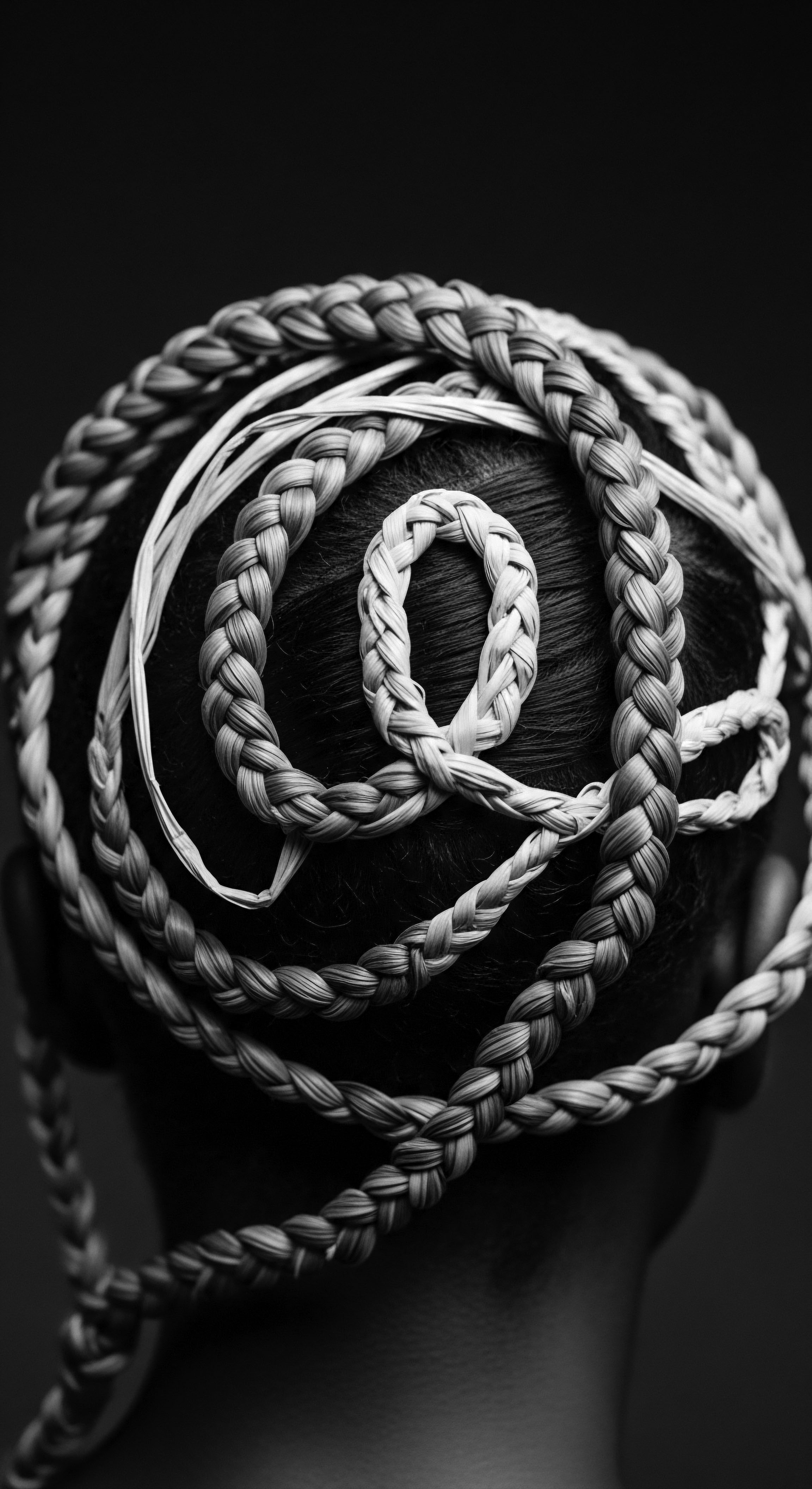
The Unique Nature of Coiled Hair
The distinctive morphology of coiled hair sets it apart, necessitating specialized conditioning approaches. The very shape of the hair strand, often forming tight S-patterns or Z-patterns, creates points of vulnerability. These bends and turns in the fiber represent areas where the cuticle is lifted, allowing for increased porosity and a diminished capacity to retain moisture. This characteristic contributes to the common experience of dryness and brittleness often associated with coiled textures.
Furthermore, the distribution of natural oils, known as sebum, along the hair shaft presents another challenge. Sebum, produced by the scalp, struggles to travel down the winding path of a coiled strand, leaving the ends particularly susceptible to dehydration. This inherent biological reality underscores the necessity of external conditioning to supplement the hair’s natural lubrication system. The practice of conditioning, therefore, serves as a compensatory mechanism, providing the vital lipids and humectants that coiled hair craves.
- Hair Structure ❉ The alpha-helical keratin proteins within the hair cortex form coiled-coil dimers, which further organize into protofilaments, microfibrils, and macrofibrils, creating the hair fiber’s robust yet flexible architecture.
- Cuticle Integrity ❉ The outer cuticle layer, composed of overlapping cells, acts as a protective shield. In coiled hair, these scales can be more prone to lifting, leading to moisture loss and increased susceptibility to damage.
- Sebum Distribution ❉ Natural oils from the scalp have difficulty traversing the intricate curves of coiled hair, resulting in drier lengths and ends that require targeted conditioning.

Intermediate
Moving beyond the foundational comprehension, the intermediate meaning of Coiled Hair Conditioning involves a deeper exploration of its functional mechanisms and its historical evolution within Black and mixed-race hair experiences. This involves understanding how conditioning agents interact with the unique molecular structure of coiled hair and how these practices have been shaped by centuries of ancestral wisdom and adaptation. The essence of this conditioning is not merely superficial application; it is a profound engagement with the hair’s very being, a dialogue between ancient remedies and modern insights.
Conditioning, in this context, refers to the application of substances that improve the hair’s texture, appearance, and manageability. For coiled hair, this often translates to increasing pliability, reducing friction between strands, and enhancing the natural curl definition. These substances, whether derived from ancestral plants or synthesized in laboratories, work by depositing film-forming agents, emollients, and humectants onto the hair shaft. These agents smooth the raised cuticle, reduce tangling, and provide a protective barrier against environmental aggressors.
The historical roots of coiled hair conditioning are deeply embedded in African traditions, long before the term “conditioner” entered modern parlance. Ancient African societies revered hair as a symbol of identity, social status, and spiritual connection. Care practices were elaborate rituals, often involving communal grooming and the application of natural ingredients.
For instance, in West Africa, shea butter, derived from the nuts of the shea tree, served as a primary conditioning agent, prized for its ability to moisturize and protect hair from harsh climates. Palm oil, coconut oil, and various herbal infusions also played significant roles in ancestral conditioning regimens.
The intermediate understanding of Coiled Hair Conditioning bridges scientific action with the enduring legacy of ancestral hair care traditions.
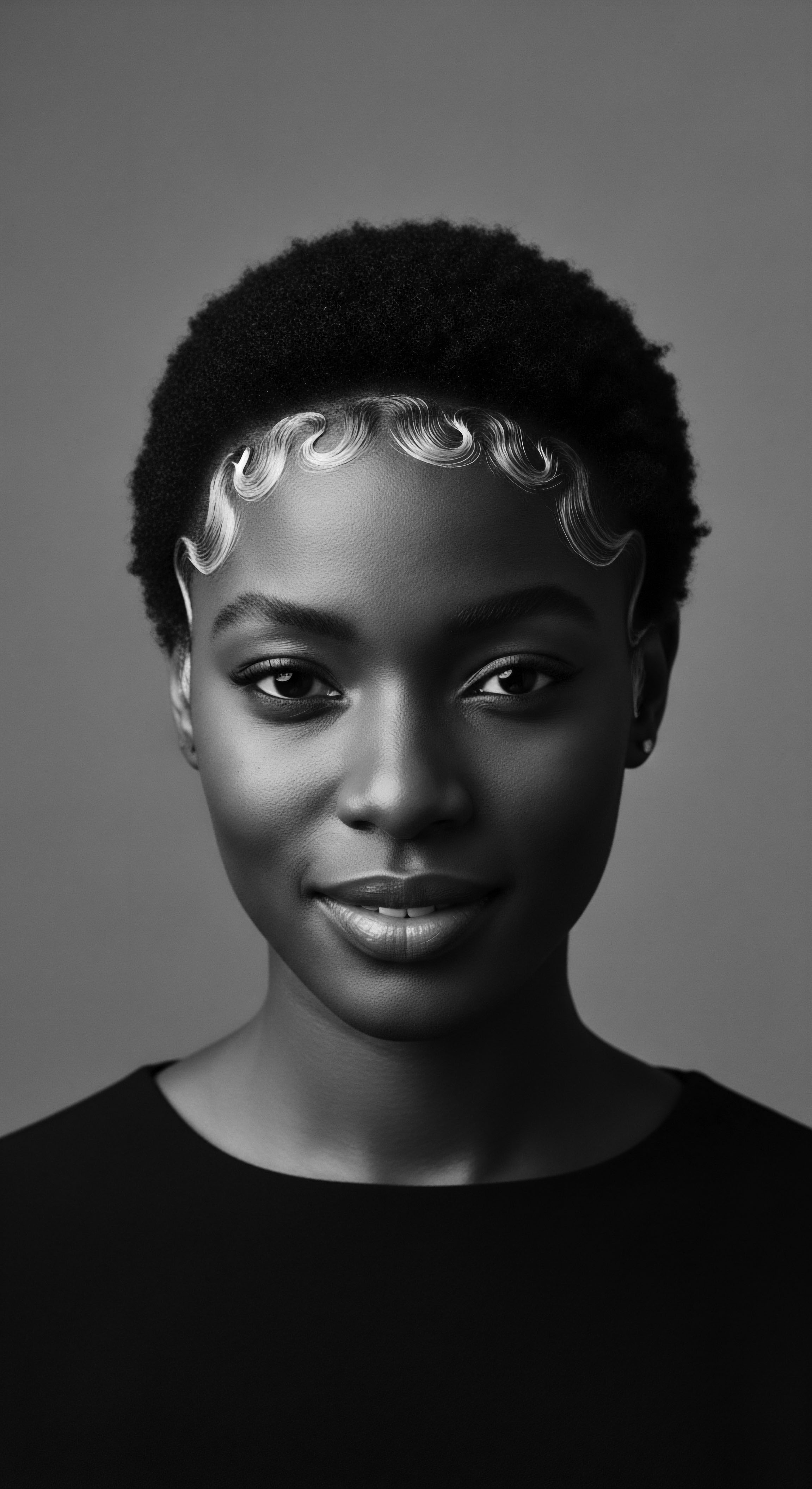
The Science of Suppleness
At a microscopic level, coiled hair conditioning works to mitigate the inherent challenges posed by its unique helical structure. The outer layer of the hair, the cuticle, comprises overlapping scales. In coiled hair, these scales tend to lift more readily at the numerous bends and twists along the strand, creating microscopic gaps. These openings allow moisture to escape rapidly and make the hair more susceptible to damage from styling tools and environmental factors.
Conditioning agents, particularly those rich in fatty alcohols, humectants, and emollients, help to smooth these lifted cuticles, effectively “sealing” the moisture within the hair shaft. This action reduces frizz and enhances shine, contributing to a more uniform and defined coil pattern.
Furthermore, the conditioning process aims to improve the hair’s tensile strength and elasticity. Coiled hair, despite its apparent robustness, can be fragile due to its intricate structure. Proteins within the hair, primarily keratin, form a complex network of alpha-helices.
Conditioning treatments can help to reinforce these protein structures and reduce protein loss, thereby minimizing breakage. The reduction of friction between individual strands, facilitated by conditioning, also plays a crucial role in preventing mechanical damage during detangling and styling, which is a common concern for individuals with coiled textures.

Echoes from the Source ❉ Ancestral Practices
The understanding of Coiled Hair Conditioning is incomplete without acknowledging the rich tapestry of ancestral practices that laid its groundwork. For generations, communities across Africa and the diaspora developed sophisticated methods for nurturing coiled hair, often utilizing the bounty of their natural environments. These practices were not simply about aesthetics; they were integral to cultural expression, communal bonding, and even survival.
During the transatlantic slave trade, enslaved Africans were forcibly stripped of many cultural practices, including their traditional hair care tools and ingredients. Despite these immense challenges, they adapted, repurposing available materials and passing down knowledge orally. Historical accounts reveal the ingenuity of enslaved women who used substances like bacon grease, butter, or kerosene for cleansing and conditioning, demonstrating an unwavering commitment to hair care even under oppressive conditions. This resilience highlights the deep-seated significance of hair care as a form of cultural continuity and self-preservation.
Consider the enduring legacy of Shea Butter. This rich emollient, derived from the nuts of the African shea tree (Vitellaria paradoxa), has been a cornerstone of West African hair care for centuries. Its application was a ritualistic act, often performed communally, symbolizing care, protection, and intergenerational wisdom. Women would meticulously work the butter into their hair, recognizing its ability to seal in moisture and protect strands from the sun’s intensity.
This practice, a testament to deep ethnobotanical knowledge, predates any modern scientific understanding of lipid barriers and moisture retention. The continuous use of shea butter today, globally recognized for its benefits for textured hair, stands as a direct lineage to these ancestral practices.
| Ancestral Ingredient/Practice Shea Butter (Vitellaria paradoxa) |
| Traditional Application/Purpose Moisturizing, protecting from sun, sealing in hydration. Used communally. |
| Modern Scientific Link/Equivalent Rich in fatty acids (oleic, stearic), vitamins A and E. Acts as an occlusive to prevent transepidermal water loss. |
| Ancestral Ingredient/Practice African Black Soap (Dudu-Osun, Alata Samina) |
| Traditional Application/Purpose Gentle cleansing without stripping, scalp soothing. |
| Modern Scientific Link/Equivalent Contains plantain skins, cocoa pods, shea tree bark, and palm oil, providing natural saponins and moisturizing elements. |
| Ancestral Ingredient/Practice Rhassoul Clay (Moroccan Lava Clay) |
| Traditional Application/Purpose Detoxifying scalp, cleansing hair without harshness, adding minerals. |
| Modern Scientific Link/Equivalent High in silica, magnesium, potassium, and calcium. Possesses absorbent properties for cleansing and conditioning. |
| Ancestral Ingredient/Practice Plant Oils (e.g. Coconut, Palm, Castor) |
| Traditional Application/Purpose Lubricating strands, adding shine, reducing breakage. |
| Modern Scientific Link/Equivalent Composed of triglycerides and fatty acids that penetrate the hair shaft or coat the surface, reducing protein loss and providing slip. |
| Ancestral Ingredient/Practice These traditional elements, passed down through generations, reveal an intuitive understanding of coiled hair's needs, often validated by contemporary scientific inquiry. |

Academic
The academic definition of Coiled Hair Conditioning extends beyond its practical application, encompassing a rigorous examination of its biomechanical implications, its sociopolitical dimensions, and its profound significance within the continuum of Textured Hair Heritage. This advanced understanding demands a nuanced interpretation of how the conditioning process interacts with the intrinsic properties of highly coiled hair, particularly the unique protein structures and cuticle morphology, while simultaneously acknowledging the historical and ongoing cultural narratives that shape its perception and practice. The meaning of Coiled Hair Conditioning, at this level, is a layered construct, reflecting not only the molecular realities of the hair fiber but also the intricate socio-historical forces that have defined Black and mixed-race hair experiences across the globe. It is a delineation of a practice that is both scientifically informed and deeply culturally embedded, a statement of care rooted in ancestral wisdom and validated by modern inquiry.
From a biomechanical perspective, Coiled Hair Conditioning targets the inherent structural vulnerabilities of hair characterized by a high degree of helical torsion. The keratin proteins, which constitute the majority of the hair cortex, arrange into alpha-helices that then form coiled-coil dimers. These intricate formations are prone to stress concentration at the apex of each coil, making these regions susceptible to fracture under mechanical strain, such as detangling or styling. Conditioning agents, specifically those containing quaternary ammonium compounds and fatty alcohols, adsorb onto the negatively charged surface of the hair, thereby reducing inter-fiber friction.
This reduction in friction is paramount for minimizing cuticle abrasion and preventing the propagation of cracks along the hair shaft, thus preserving the structural integrity of the coiled helix. The explication of Coiled Hair Conditioning, therefore, includes the precise chemical interactions that confer improved lubricity and elasticity to the hair, enabling it to withstand the daily manipulations that are often necessary for managing highly textured strands.
Moreover, the efficacy of conditioning is directly linked to the hair’s hygroscopic nature and its interaction with atmospheric moisture. Coiled hair, with its often raised cuticle and lower lipid content compared to straighter hair types, experiences more rapid fluctuations in moisture content, leading to phenomena such as frizz and loss of curl definition. Conditioning treatments act as humectant delivery systems, drawing water from the environment into the hair cortex, and as occlusive barriers, preventing its rapid evaporation.
The optimal conditioning regimen for coiled hair involves a delicate balance of these two functions, ensuring sustained hydration without leading to hygral fatigue, a condition where excessive swelling and shrinking of the hair fiber due to water absorption and desorption compromises its structural integrity. This complex interplay of molecular dynamics and environmental factors underscores the scientific sophistication inherent in effective coiled hair conditioning.
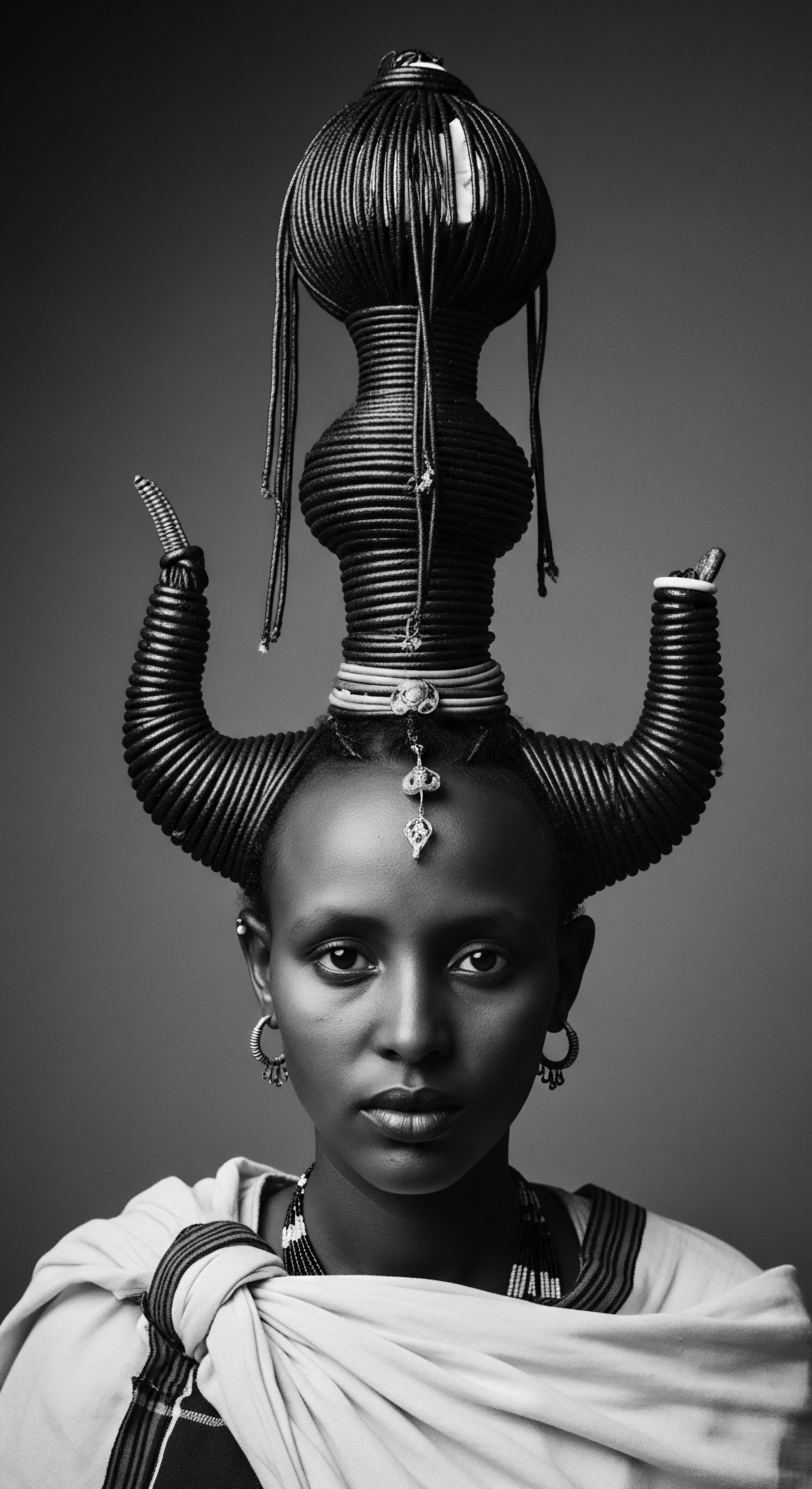
The Cultural Cartography of Coiled Hair Conditioning
Beyond the biophysical, the academic understanding of Coiled Hair Conditioning necessitates a thorough cultural and historical analysis, particularly within the context of the African diaspora. Hair, for people of African descent, has never been a mere aesthetic feature; it is a profound marker of identity, a canvas for storytelling, and a potent symbol of resistance and resilience. The practices of conditioning, therefore, are not isolated acts of beauty but rather embedded within a rich cultural cartography, reflecting historical struggles, communal solidarity, and evolving expressions of self.
The ancestral knowledge surrounding coiled hair care predates the transatlantic slave trade, where intricate hairstyles communicated social status, tribal affiliation, and spiritual beliefs. Upon forced migration, enslaved Africans were stripped of their traditional grooming tools and ingredients, yet they innovated, adapting their conditioning practices using whatever was available. This period saw the resourceful application of substances like bacon grease or animal fats, not as ideal solutions, but as acts of defiance and cultural preservation, a testament to an enduring commitment to hair health and identity. This historical context underscores the deep-seated meaning of conditioning as a practice of continuity amidst rupture.
The enduring legacy of these ancestral practices continues to shape contemporary coiled hair conditioning. The “natural hair movement,” gaining significant momentum from the Civil Rights era of the 1960s, saw a resurgence of pride in natural, unprocessed coiled textures. This movement, far from being a mere trend, represented a powerful sociopolitical statement against Eurocentric beauty standards that had historically devalued Black hair. The increased demand for products catering to natural hair textures, often formulated with ingredients traditionally used in African communities like shea butter and coconut oil, reflects a reclamation of heritage and a collective redefinition of beauty.
Coiled Hair Conditioning is a testament to the resilience of ancestral practices, evolving through scientific understanding while remaining deeply rooted in cultural identity.

A Case Study in Reclamation ❉ The CROWN Act and Hair Identity
To illuminate the profound connection between Coiled Hair Conditioning and textured hair heritage, one can examine the legislative efforts embodied by the CROWN Act (Creating a Respectful and Open World for Natural Hair) in the United States. This legislation, first passed in California in 2019 and subsequently adopted by numerous states, prohibits discrimination based on hair texture and protective hairstyles associated with race. The passage of the CROWN Act is a direct response to a long history of systemic discrimination where Black individuals, particularly women, faced professional and educational barriers due to their natural hair, often deemed “unprofessional” or “unruly” by Eurocentric standards.
This legislative movement underscores the deeply political nature of coiled hair and, by extension, its conditioning. For centuries, the very act of caring for and styling coiled hair in its natural state was an act of resistance against enforced assimilation. The conditioning rituals, whether ancestral or modern, became a means of preserving not just hair health but also cultural dignity. A 2019 study conducted by Dove, in partnership with the CROWN Coalition, revealed that 66% of Black girls in majority-White schools experience hair discrimination, a figure significantly higher than Black girls in other school environments.
This statistic powerfully illustrates the ongoing societal pressures and the necessity of legal protections for those who choose to wear their hair in its natural, coiled state. The CROWN Act, therefore, does not simply protect a hairstyle; it protects the right to express one’s racial and cultural identity through hair, making the act of coiled hair conditioning a symbol of liberation and self-affirmation. This legal recognition elevates the significance of hair care practices from personal grooming to a fundamental aspect of civil rights, inextricably linking the scientific understanding of coiled hair’s needs to its heritage and social acceptance.
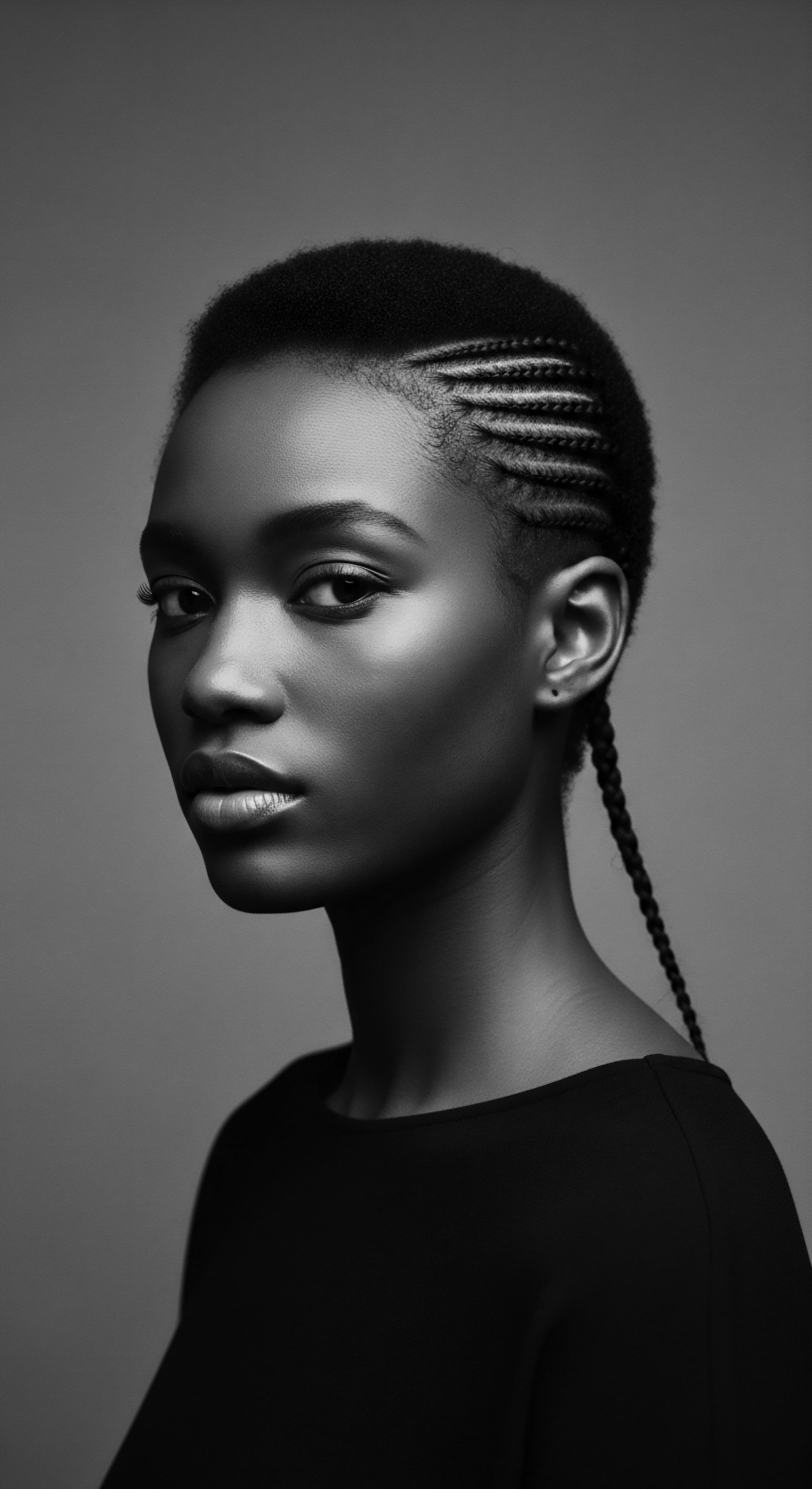
The Unbound Helix ❉ Shaping Futures Through Conditioning
The academic purview of Coiled Hair Conditioning extends into its implications for future research, product development, and the ongoing decolonization of beauty standards. A critical examination of existing scientific literature often reveals a historical bias towards studying straight hair, leaving significant gaps in understanding the nuanced biology and optimal care for coiled textures. Future research must prioritize the unique biomechanical and biochemical properties of coiled hair, leading to innovations that genuinely serve the needs of this diverse hair type rather than attempting to alter it to conform to Eurocentric ideals. This requires a deeper inquiry into the lipid composition of coiled hair, the specific amino acid profiles that contribute to its structural integrity, and the most effective delivery systems for conditioning agents that respect its natural architecture.
Furthermore, the academic discourse around Coiled Hair Conditioning must continue to dissect the cultural politics embedded within hair care. This involves scrutinizing marketing narratives, challenging implicit biases in product formulations, and amplifying the voices of those with lived experience of coiled hair. The objective is to move beyond a mere functional definition of conditioning towards one that acknowledges its role in fostering self-acceptance, cultural pride, and holistic well-being. The future of Coiled Hair Conditioning lies in a harmonious synthesis of rigorous scientific understanding and profound cultural reverence, ensuring that every coiled strand is not only nourished but also celebrated in its authentic form.
- Hair Protein Analysis ❉ Advanced spectroscopic techniques can reveal the precise arrangement of keratin and associated proteins in different coiled hair types, guiding the development of targeted conditioning agents.
- Cuticle Topography Studies ❉ High-resolution microscopy can map the surface of coiled hair, identifying areas of vulnerability and informing the design of conditioners that provide superior cuticle smoothing and protection.
- Hydration Dynamics ❉ Quantitative analysis of water absorption and desorption in coiled hair can lead to formulations that optimize moisture retention and minimize hygral fatigue.
- Cultural Impact Assessments ❉ Interdisciplinary studies, combining hair science with sociology and anthropology, can measure the psychological and social benefits of culturally attuned coiled hair conditioning practices.

Reflection on the Heritage of Coiled Hair Conditioning
As we draw this meditation on Coiled Hair Conditioning to a close, we find ourselves standing at a crossroads where ancient wisdom meets contemporary understanding, all held within the delicate yet resilient helix of textured hair. The journey of coiled strands, from the communal hearths of ancestral Africa to the global stage of modern beauty, is a testament to an unbroken lineage of care, adaptation, and profound self-expression. It is a narrative etched not just in scientific papers but in the very fibers of our being, a story of survival, artistry, and enduring spirit. The conditioning of coiled hair, therefore, is far more than a routine; it is a ritualistic acknowledgment of a living heritage, a continuous conversation with the past that shapes our present and informs our future.
The Soul of a Strand ethos, the guiding light of Roothea’s living library, reveals itself most vividly in this exploration. Each coil, each curve, carries the memory of generations—the hands that braided, the herbs that nourished, the struggles that forged resilience. To condition coiled hair is to honor this memory, to provide sustenance not only to the physical strand but to the cultural legacy it embodies.
It is a quiet act of defiance against historical erasure, a vibrant affirmation of beauty in its most authentic, textured form. This act of care allows the unbound helix to truly flourish, unfurling its full potential, rooted deeply in its origins yet reaching confidently towards new horizons.
We are reminded that hair care, particularly for coiled textures, has always been a space of ingenuity and resistance. From the resourceful methods employed during periods of oppression to the contemporary natural hair movement, the community has consistently redefined beauty on its own terms. The ongoing pursuit of knowledge, both scientific and ancestral, ensures that Coiled Hair Conditioning remains a practice of empowerment, enabling individuals to connect with their inherited beauty and express their identity with confidence and pride. This ongoing dialogue between science and heritage ensures that the story of coiled hair continues to be written, each strand a testament to its vibrant past and promising future.

References
- Byrd, A. D. & Tharps, L. L. (2001). Hair Story ❉ Untangling the Roots of Black Hair in America. St. Martin’s Press.
- Banks, I. (2000). Hair Matters ❉ Beauty, Power, and the Politics of Dreadlocks. New York University Press.
- Jacobs-Huey, L. (2006). From the Kitchen to the Parlor ❉ Language and Becoming in African American Women’s Hair Care. Oxford University Press.
- Robbins, C. R. (2012). Chemical and Physical Behavior of Human Hair. Springer.
- White, S. & White, S. (1995). Slave Hair. The Journal of American History, 82(2), 526-545.
- Tharps, L. L. (2014). Hair Story ❉ Untangling the Roots of Black Hair in America. St. Martin’s Griffin.
- Deely, J. (1990). Basics of Semiotics. Indiana University Press.
- Hill, D. (2024). Rhetoric of Natural Hair ❉ Cultural Contradictions. Advances in Applied Sociology, 14, 504-516.
- Rosado, T. (2003). Black Hair and the Politics of Identity. University of California Press.
- Tarver, C. (2006). The Hair Care Handbook ❉ A Guide for Women of Color. Amber Books.
